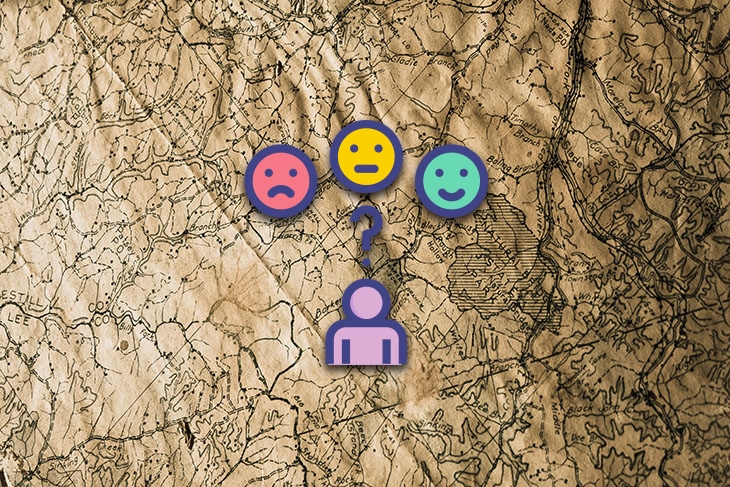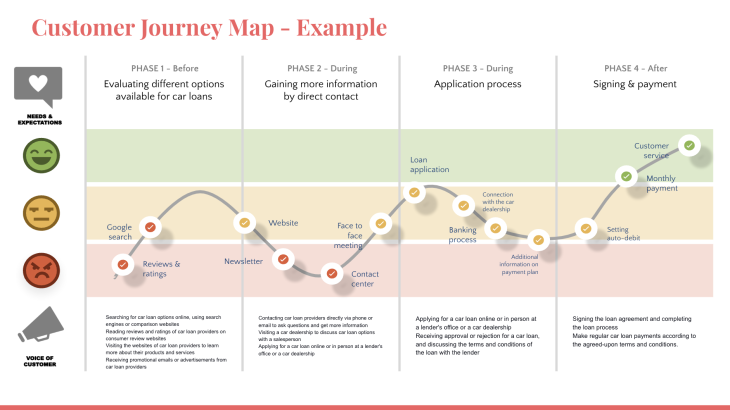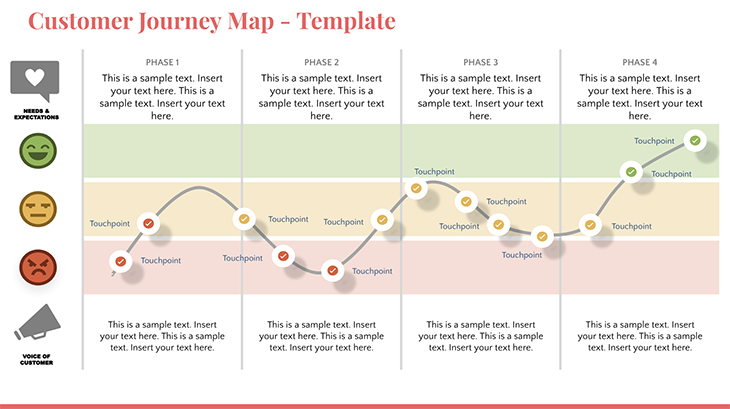As product people, we focus intensely on creating a world-class user experience for our products and services. Although a great user experience is crucial while interacting with our products or services, we often miss the prospect of creating impact outside our product flows.

Great brands that we use daily and that we recall/remember easily have mastered this concept. They positively impact their customers by creating experiences before, during, and after the use of their products and services. As a result, good brands are selling experiences to their customers.
This profound impact can be made by following the customer journey, understanding where they are coming from, managing their expectations, and heeding through even after achieving the target.
With digitalization and emerging technologies, multiple channels exist to communicate with customers, thereby redefining customer expectations. As a result, there is a significant shift in what the customer envisions while making a purchase decision.
To be top-of-mind and retain loyalty, companies must consider different ways of meeting these new expectations and making every customer journey smooth and delightful. The best way to get in-depth knowledge to provide a good experience is to create a customer journey map.
Customer journey mapping is when you create a map of the stages customers undergo while choosing and using your product, as well as what they do post-use.
The digital age offers numerous opportunities for us to connect with our customers. However, this also means we must understand how our customers experience all these touch points.
A customer journey map visualizes our customers’ experiences, from deciding to buy our product/services to after-sales service and beyond. It is a way to see their milestones as interaction points with our products and services. This ultimately helps us gain insight into the customer experience and how we can optimize that experience at each point to create a pleasant journey.
A customer journey map is most beneficial for existing products and services to identify challenges and improvements. Still, it can also be helpful for new product development by analyzing the potential customers’ expectations and measuring the competitor’s brand experience.
By creating a customer journey map, you can identify pain points and opportunities for improvement in the customer experience, which can help you provide better services and retain customers. Additionally, a customer journey map can help align cross-functional teams and different SMEs (subject matter experts) around a common understanding of the customer experience. This can lead to more effective and efficient product development and operations, resulting in increased customer satisfaction and loyalty.
The four main objectives while creating a customer journey mapping are:
Being customer-centric and making decisions based on feedback and data to improve user experience is a solid foundation for a great product or service development. Customer centricity can be driven by a common understanding gained by visualizing the customer journey map.
A deeper understanding of customer behavior involves collecting and analyzing data on how customers interact with each touch point in each stage. It can include studying customer demographics, behavior patterns, feelings, and motivations.
By analyzing this data, you can gain insights into what drives customer behavior and how it may change over time, helping you make informed decisions about improving the customer experience and ultimately driving product growth.
Understanding customer behavior can help a company anticipate the needs and preferences of the customer. It allows us to drive behavioral data-driven development, pushing our product to the next level of providing personalized experiences and building stronger relationships with them.
By creating a customer journey map, the entire organization will work towards the same goal by having a shared understanding of the customer experience. This can lead to better collaboration and, ultimately, a more positive customer experience. It also helps with prioritization and setting shared KPIs (key performance indicators).
Next, we’ll talk about how to create a customer journey map. It’s not as difficult as one may think!
The first step to creating a customer journey map is identifying and developing customer segments. This involves dividing your customers into groups based on common characteristics, such as demographics, needs, behaviors, and goals.
Let’s take an example of a car loan application. Your company helps people get car loans and uses a digital product to help the process.
The first customer segment can be people in the age group of 18–25, first-time car owners early in their careers, looking for affordable interest rates and an easy approval process, and preferably can carry out the end-to-end process on the phone.
The other customer segment can be a member of a family wanting to buy a second car, in the age group of 30–55, looking for a joint application with their spouse, and with a total household income above $100,000.
Once you have identified your customer segments, you can create personas for each segment. Personas are fictional characters that represent a specific customer segment, and they can help you better understand your customers’ needs, motivations, feelings, and behaviors.
Here are examples of different personas based on the first customer segment:
A backstory helps us relate to our personas and gives them a characteristic. We can identify their experiences based on their needs and requirements and also understand where they are coming from, what is important to them, and how they would like to be treated by service providers.
Let’s create a backstory for our first persona, Anna.
Anna is a college student in her late teens. She attends classes full-time and works part-time to support herself financially. Despite her busy schedule, Anna is highly motivated and determined to succeed in her studies and job.
As a college student, Anna is constantly on the go and always looking for ways to save time and money. She is an avid technology user and uses her smartphone and laptop to stay connected with her friends and classmates. She also uses online shopping and ride-sharing apps to make her daily life more convenient.
Anna recently decided to apply for a car loan to buy her first car. She believes owning a car will give her more freedom and flexibility, and she is excited about the prospect of driving herself to her classes and work. She is currently researching car loan options and comparing rates from different lenders to find the best deal.
As a potential customer for a car loan provider, Anna presents a number of opportunities and challenges. On the one hand, she is a young and motivated individual who is likely to be a responsible borrower. On the other hand, her limited income and lack of credit history may make it difficult for her to secure a loan. A car loan provider that can offer flexible terms and low rates for young borrowers like Anna may win her business.
Once you have created your personas, you can start mapping out each persona’s customer journey. This involves identifying the key touch points and experiences that each persona has, from the moment they first become aware of your product to when they make a purchase decision, and beyond.
There are several touch points that Anna may experience while researching car loans. Some possible touch points include:
These touch points represent opportunities to engage with Anna and provide her with the information, support, and guidance she needs to make an informed decision about her car loan.
By providing a positive and seamless experience at each touch point, your company can build trust and credibility with Anna, ultimately winning her as a loyal customer for the long term. The goal is to stay at the top of Anna’s whenever she’s looking for an upgrade at a later point in her life or when she wants to have more cars.
You can use various tools and techniques to create the customer journey map, such as flowcharts, diagrams, and storyboards. The goal of the customer journey map is to provide a visual representation of the customer experience, highlighting any pain points or opportunities for improvement.
Although this is a feeling map, the input for creating this board is entirely data-driven. To create a feeling map, you need to collect feedback and ratings from your customers on how they experience each touch point. You can do this either by quantitative testing (from collecting feedback in your touch points) or by qualitative surveys (from interviewing a few potential/existing customers, asking them how the experience was, and finding out if it was smooth or frustrating).
Every hitch and irritation is an opportunity to improve in that area for the product teams to focus on:

Example of how to create a customer journey map from the example we have been using in this article.
In addition to identifying/evaluating the customer’s negative impressions/pain points, define solutions to address those pain points, and create an opportunity canvas to provide a top-notch experience. This opportunity canvas should include data on all the lows in customer experience so that you can include this in the focus area of improvement and have clear priorities for future development.
The outcome of the customer journey should not end at just identifying and evaluating the customer journey but rather on a suggested outcome. Creating an opportunity canvas based on the analysis provides a concrete roadmap for improvement and helps prioritize future development.
Continuing on the above example of the loan application, a few clear indications of opportunities to improve can be:
As previewed in a screenshot in the last section, I made a free template that you can use to help with your customer journey mapping. Feel free to use it to create your customer journey map:

Customer journey mapping is substantial for improving customer experience and gaining long-term loyalty, which generates organic business in the long run. When a product or service creates an impression on the customer, not only will the customer return for future needs, but also spread the good words and generate additional business. It also increases the goodwill, trust, and reputation of the brand.
On the other hand, if the company ignores creating a customer journey map and identifying the issue, it will not just make an awful customer experience but will keep losing business over time. Of course, while looking at each touch point separately, it might not be apparent how big the issue is.
Still, when we compile the customer journey map, it becomes obvious how customer frustration accumulates and can result in loss of business. Experience goes a long way and if we want our business to grow organically over time, we must focus on improving our experience in every channel for our customers.
Featured image source: IconScout

LogRocket identifies friction points in the user experience so you can make informed decisions about product and design changes that must happen to hit your goals.
With LogRocket, you can understand the scope of the issues affecting your product and prioritize the changes that need to be made. LogRocket simplifies workflows by allowing Engineering, Product, UX, and Design teams to work from the same data as you, eliminating any confusion about what needs to be done.
Get your teams on the same page — try LogRocket today.

A practical framework for PMs to use AI in ideation without sacrificing judgment, strategy, or decision quality.

A practical five minute revenue estimation method to help product managers compare ideas, drop low impact features, and prioritize smarter.

A practical guide for PMs who want to stop being bottlenecks, delegate smarter, and lead teams effectively with a clear ownership framework.

Stop letting unreliable data block features. Treat data as inventory to track quality, ownership, and ship with confidence.